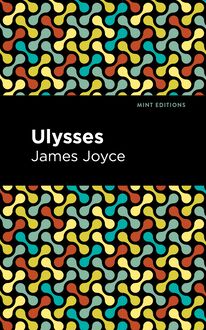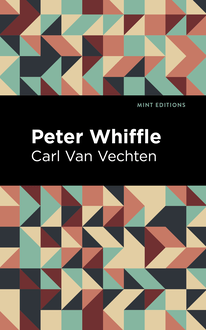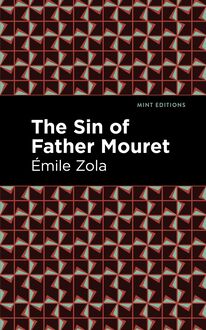-
 Univers
Univers
-
 Ebooks
Ebooks
-
 Livres audio
Livres audio
-
 Presse
Presse
-
 Podcasts
Podcasts
-
 BD
BD
-
 Documents
Documents
-
- Cours
- Révisions
- Ressources pédagogiques
- Sciences de l’éducation
- Manuels scolaires
- Langues
- Travaux de classe
- Annales de BEP
- Etudes supérieures
- Maternelle et primaire
- Fiches de lecture
- Orientation scolaire
- Méthodologie
- Corrigés de devoir
- Annales d’examens et concours
- Annales du bac
- Annales du brevet
- Rapports de stage
La lecture à portée de main
Vous pourrez modifier la taille du texte de cet ouvrage
Découvre YouScribe en t'inscrivant gratuitement
Je m'inscrisDécouvre YouScribe en t'inscrivant gratuitement
Je m'inscrisEn savoir plus
Vous pourrez modifier la taille du texte de cet ouvrage
En savoir plus

Description
The Rush for the Spoil (1872) is a novel by French author Émile Zola. The second of twenty volumes of Zola’s monumental Les Rougon-Macquart series is an epic story of family, politics, class, and history that traces the disparate paths of several French citizens raised by the same mother. Spanning the entirety of the French Second Empire, Zola provides a sweeping portrait of change that refuses to shy away from controversy and truth as it gets to the heart of heredity and human nature. Aristide Saccard is the son of Pierre Rougon, a man born into poverty who rose through vanity and shear opportunism to a position of power in the France of Napoleon III. After a rakish youth, Aristide promises his brother Eugene, a prominent politician, that he will make his way in the world under a different surname. Destined for failure, he manages to gain funding for a scheme involving the purchase of homes destined for demolition. Collecting government compensation for each property, Aristide turns a handsome profit and eventually becomes one of the richest men in Paris. When his wife becomes terminally ill, he decides to sacrifice the last of his morality by marrying a wealthy pregnant woman, whose father has promised an immense dowry. As the years go by, his fragmented family suffers under the weight of their father’s impropriety, illuminating the hypocrisy and obscenity of wealth in nineteenth century France. The Rush for the Spoil is a story of family and fate, a thrilling and detailed novel that continues a series rich enough for its author to explore in twenty total volumes. With a beautifully designed cover and professionally typeset manuscript, this edition of Émile Zola’s The Rush for the Spoil is a classic work of French literature reimagined for modern readers.
Sujets
Informations
| Publié par | Mint Editions |
| Date de parution | 21 mai 2021 |
| Nombre de lectures | 0 |
| EAN13 | 9781513287102 |
| Langue | English |
Informations légales : prix de location à la page 0,0500€. Cette information est donnée uniquement à titre indicatif conformément à la législation en vigueur.
Extrait
The Rush for the Spoil
Émile Zola
The Rush for the Spoil was first published in 1872.
This edition published by Mint Editions 2021.
ISBN 9781513282084 | E-ISBN 9781513287102
Published by Mint Editions®
minteditionbooks.com
Publishing Director: Jennifer Newens
Design & Production: Rachel Lopez Metzger
Project Manager: Micaela Clark
Translated By: Ernest Vizetelly
Typesetting: Westchester Publishing Services
C ONTENTS P REFACE I II III IV V VI VII
P REFACE
T he public and the press have agreed that “L’Assommoir” is M. Zola’s chef d’œuvre . Against this verdict I have no objection to offer. I believe it will meet with posterity’s endorsement. But although “L’Assommoir” may lift its head the highest, there are many other volumes in the Rougon-Macquart series which stand on, and speak from equally lofty platforms of art. In my opinion, these are “La Faute de l’Abb é Mouret,” “La Conqu ê te de Plassans,” and “La Cur é e.”
I have spoken before of Zola as an epic poet: he is this more than he is anything, and as he is more epic in “La Cur é e” than elsewhere (“L’Assommoir” and “La Faute de l’Abb é Mouret” always excepted), it follows that it must be one of the best and most characteristic of his works. The qualities that endow a book with immortality exist independent of the artist’s will, and the process of penetrating, of animating the whole with life, is accomplished as silently and unconsciously as the seed-grain germinates in the earth, as the child quickens with life in the womb. And, doubtless, Zola intended in the beginning to write merely the passionate love story of a woman who, oppressed and wearied of luxury, is forced to seek, in violent ways and fierce fancies, oblivion of golden idleness, of an aimless and satiated existence. This idea might have been worked out, and adequately worked out, in the analysis of the mind of a duke’s daughter, who, after five years of husband hunting in London drawing-rooms, runs away and lives with her groom at Hampstead. And taken out of its setting, M. Zola’s story is quite as simple. Ren é e is a young girl of the upper middle classes; she has been seduced; she is enceinte; it is necessary to find her a husband. Under such circumstances, it would be vain to be too particular, and an adventurer called Saccard is chosen. He is a genius who is waiting for a few pounds to make a million. Ren é e’s fortune enables him to do this; he places her in a magnificent house in the Parc Monceaux; he gives her everything but an interest in life: to gain this she falls in love with her stepson, Maxime Saccard. The story of this incestuous passion becomes the theme of the book; and when Maxime deserts his stepmother to get married, she dies of consumption. That is all; but this slight outline soon began to grow, to take gigantic proportions in Zola’s mind; and it was not long before he saw that his story was an allegory of the Second Empire. Ren é e became Paris; her dressmaker—Worms—became the Emperor; her dresses, the material of which costs sixty, the making-up of which, with the accumulated interest, costs six hundred, are the boulevards and buildings with which the city was adorned at ruinous expense. In the clamour of the f ê tes in the Parc Monceaux, the demands of the creditors are silenced, and when Ren é e dies her debts are paid by her father—that is to say, by the Republic of M. Thiers.
Ren é e is a Venus, but not the Greek Venus—the white-breasted woman born of the sea foam and heralded by cupids and tritons; she is not even “the obscure Venus of the hollow Hill” that Baudelaire describes as having grown diabolic among ages that would not accept her as divine. Ren é e is the Venus of the counting house. Her hair is yellow as pale gold, her drawing-room is hung with yellow draperies, and her golden head, seen thereon as she leans back in her richly upholstered chairs, seems like a setting sun that sinks little by little, drowned in a bath of gold. But, unlike her earlier prototypes, she does not find the flesh sufficient; her sensualities are not the dark desire of the animal, but the nervous erethism of a human mind that, satiated with pleasure, longs and hungers for some strange and acute note to break the cloying sweetness—the monotonous melody of her life. Here there is no touch of pagan or medi æ val thought. Maxime fears no god, he knows not remorse nor even desire; he is the son of the capitalist; he is the weed sprung from, but not the intelligence that has built up, the gold-heap, and he festers and rots like a weed in an overpoweringly rich soil. Saccard is Mammon. Nothing exists for him but gold. Thoughts, dreams, love, have long since disappeared; he is not even vicious: in the lust of speculation all other passions have been submerged, have sunk out of sight for ever. Men and things only suggest to him ideas for the accumulation of wealth; and from the heights of Montmartre he looks down upon Paris like a wolf upon its prey. His eyes flash with fierce light, his lips twitch with a wild mental hunger that manifests itself in physical actions: with his hand he divides Paris into sections, he sees how he will distribute it into boulevards, squares, and streets; and he hears in vision the cries of the huntsmen, and he longs to put himself at the head of the hounds, and to descend with open jaws upon the splendid quarry that even now run to death lies panting and bleeding before him.
The book is Paris—Paris as she feasted and flattered under the Second Empire—a Paris of adventurers, of courtezans—a Paris of debts—a Paris of women’s shoulders, cotillons, champagne, of violins and pianos—a Paris of opera hats—a Paris of gold pieces, of fraud, of liars, of speculation, of supper tables—a Paris sonorous and empty as a wheel of fortune—a Paris of sweetmeats, rendezvous, bank-notes—a Paris of tresses of false hair forgotten in hackney carriages.
Yes, a Paris of this and of little else. There is the famous scene of the return from the Bois. Under the pale October sky, in which towards the Porte de la Muette, there still floats the dim light of an autumn sunset, the carriages are blocked; and the uncertain rays dance through the brightly painted wheels, touching with intense splendour the buckles of the harness, the large buttons on the liveries, and the burnished cockades. The artificial lake lies still, reflecting in its crystal clarity the innumerable graces of the poplars and pine trees that grow down to the very banks of the trim island. The walks are as bits of grey ribbon lost in the dark foliage. The scene looks like a newly varnished toy. All Paris is there—courtezans, diplomatists, and speculators. Ren é e is there; she is with Maxime, who is pointing out and telling her about his father’s new mistress.
She is the celebrated Laure, to whose house Ren é e goes with Maxime, because she is anxious to know what a cocotte’s ball is really like. Afterwards they sup, in a cabinet particulier , at the Caf é Riche. Ren é e is sipping a glass of chartreuse; the gas is hissing, the room has grown hot. They throw open the window. Paris rolls beneath them. The Boulevard is alive with the flashing lights of carriages, women go by in hundreds; they pass into the darkness of a traversing street; they reappear again like shadows thrown by a magic lantern. Groups of men sit round the tables at the door of the caf é ; some are talking to women; some sit smoking vacantly, watching the interminable procession that passes and repasses before them. One woman wears a green silk; she sits with her legs crossed. Ren é e feels strangely interested. By-and-by, wearied of the Boulevard, she examines the looking-glass, scratched all over with diamond rings; and she asks Maxime questions concerning the women whose names are scrawled thereon. Maxime pleads ignorance: putting his cigar aside, he advances towards her; they look into each other’s eyes; she falls into his arms.
There is the ball-room scene. Saccard is on the brink of ruin, but he gives a f ê te that costs him four thousand pounds. He is anxious that his son should marry a little hunchback, who has an immense fortune. The tableaux vivants are over, and the dancers, in the costumes of gods and goddesses, are dancing the cotillon. Ren é e, who is cognizant of her husband’s projects, is wandering about mad with nervous rage and despair. She pursues Maxime, drags him with her into her bedroom, and tells him that he must fly with her to America, that she will never consent to give him up.
And I must not forget that requisite bit of description—ten lines, not more—which, for rapidity of observation and precision and delicacy of touch, seems to me unsurpassable; indeed, to find anything that might be set against it, I should have to turn to that supreme success, that final vindication of the divine power of words—Flaubert’s “L’ É ducation Sentimentale.” The passage I allude to is when Ren é e goes to the great f ê te at the Tuileries. She wears a wonderful dress, composed entirely of white muslin and black velvet. The bodice is in black velvet, the skirt in white muslin, garnished with a million flounces, and all cut up and adorned with bows made out of black velvet: no ornament but one diamond in her fawn-coloured hair. Suddenly the people draw into lines, and the corpulent Emperor walks down the room on the arm of one of his generals. Ren é e shrinks back: but she cannot get away—she is in the front rank; and, when Napoleon fixes his, all eyes are fixed upon her. A heaven of lustres is above her head, a velvety carpet beneath her feet, and she hears the general whisper to the Emperor: “There’s a carnation that would suit our button-holes uncommonly well.” The rest of the f ê te is lost in this moment d’âme ;—is an acute note that vibrates long in the monotonous melody of her life.
Whether “La Cur é e” is a faithful picture, true to the smallest detail, of life under the Second Empire, I cannot say.
-
 Univers
Univers
-
 Ebooks
Ebooks
-
 Livres audio
Livres audio
-
 Presse
Presse
-
 Podcasts
Podcasts
-
 BD
BD
-
 Documents
Documents
-
Jeunesse
-
Littérature
-
Ressources professionnelles
-
Santé et bien-être
-
Savoirs
-
Education
-
Loisirs et hobbies
-
Art, musique et cinéma
-
Actualité et débat de société
-
Jeunesse
-
Littérature
-
Ressources professionnelles
-
Santé et bien-être
-
Savoirs
-
Education
-
Loisirs et hobbies
-
Art, musique et cinéma
-
Actualité et débat de société
-
Actualités
-
Lifestyle
-
Presse jeunesse
-
Presse professionnelle
-
Pratique
-
Presse sportive
-
Presse internationale
-
Culture & Médias
-
Action et Aventures
-
Science-fiction et Fantasy
-
Société
-
Jeunesse
-
Littérature
-
Ressources professionnelles
-
Santé et bien-être
-
Savoirs
-
Education
-
Loisirs et hobbies
-
Art, musique et cinéma
-
Actualité et débat de société
- Cours
- Révisions
- Ressources pédagogiques
- Sciences de l’éducation
- Manuels scolaires
- Langues
- Travaux de classe
- Annales de BEP
- Etudes supérieures
- Maternelle et primaire
- Fiches de lecture
- Orientation scolaire
- Méthodologie
- Corrigés de devoir
- Annales d’examens et concours
- Annales du bac
- Annales du brevet
- Rapports de stage

















